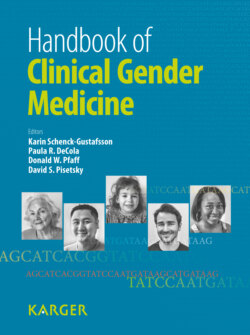Читать книгу Handbook of Clinical Gender Medicine - Группа авторов - Страница 89
На сайте Литреса книга снята с продажи.
The Measurement of Stress
ОглавлениеThe magnitude of stress experienced by an individual can be assessed by measures of environmental stressor frequencies, subjective psychological ratings, and/or objective biological indices related to stress responses. Situations that are novel or unpredictable, threaten self-preservation, and/or diminish one’s sense of control will additively contribute to stress responses [3, 4]. This response refers to the sympathetic-adrenal-medullary axis release of catecholamines within seconds and the hypothalamic-pituitary-adrenal axis secretion of glucocorticoids several minutes thereafter. Resulting stress hormones like adrenalin and cortisol mobilize the energy necessary for fight-or-flight responses first described by Walter Cannon.
According to Sterling and Eyer [5], this metabolic allocation of catabolic energy exemplifies allostasis, defined as the biological processes that facilitate dynamic stabilization to environmental demands. The price the brain and body pay for cumulatively generating allostatic responses is called AL [2], referring to the multisystemic biological damage caused by chronic stress. As this chapter will reveal, AL is easily measurable using indices that currently incorporate various peripheral biomarkers. These are related to older age, distributed differently according to sex, and moderated by gendered risk factors and protective factors discussed in our chapter’s later sections.
